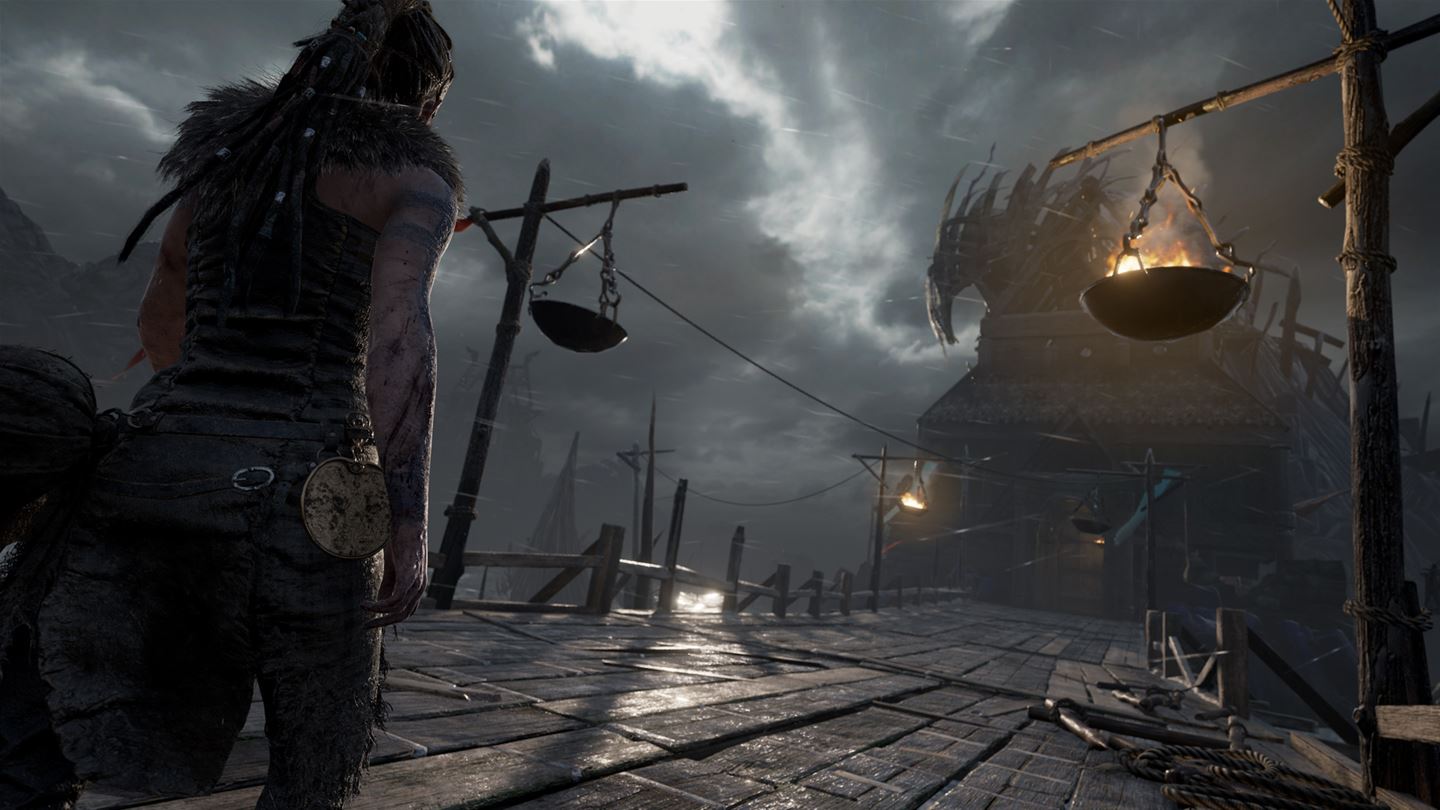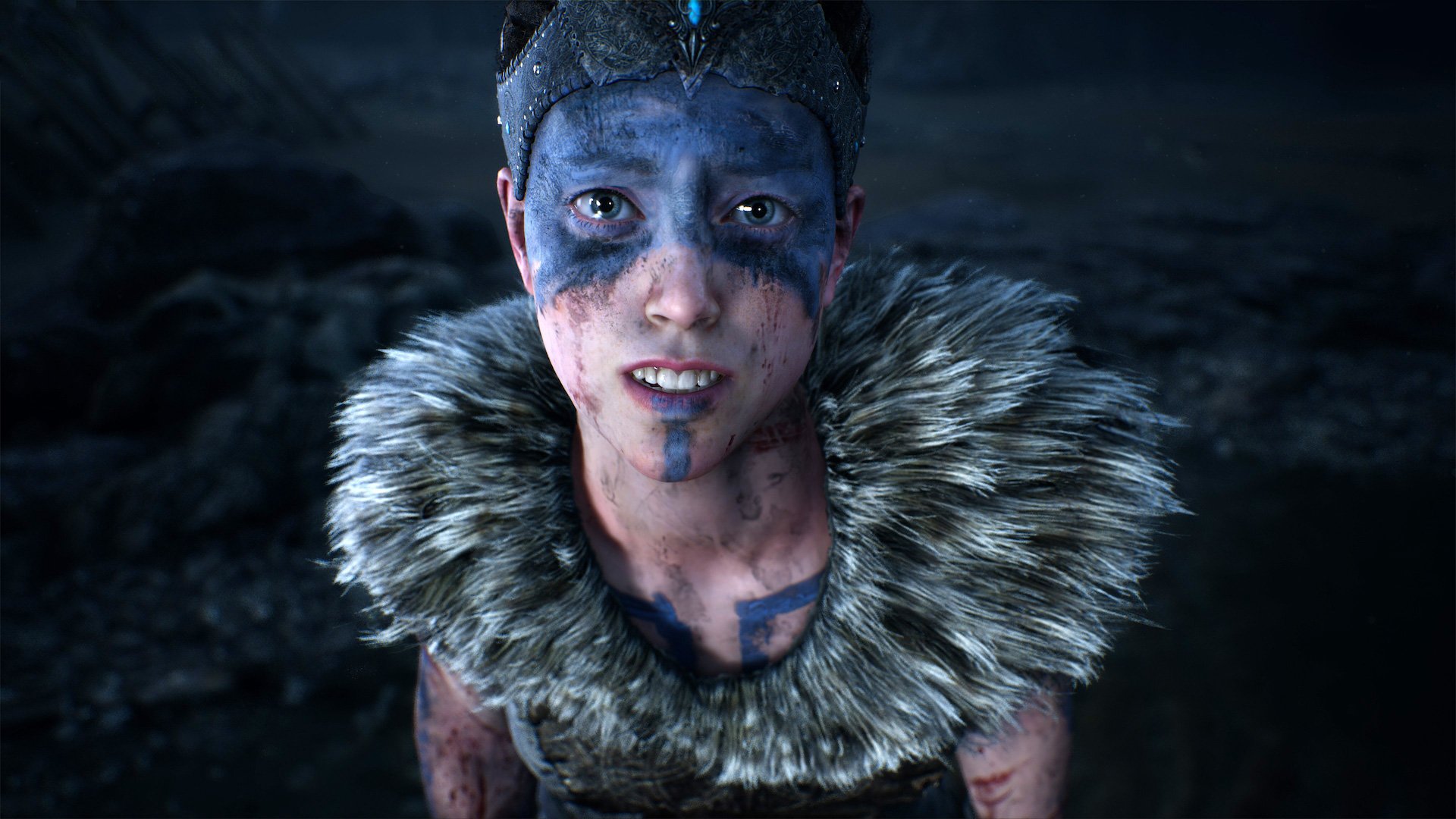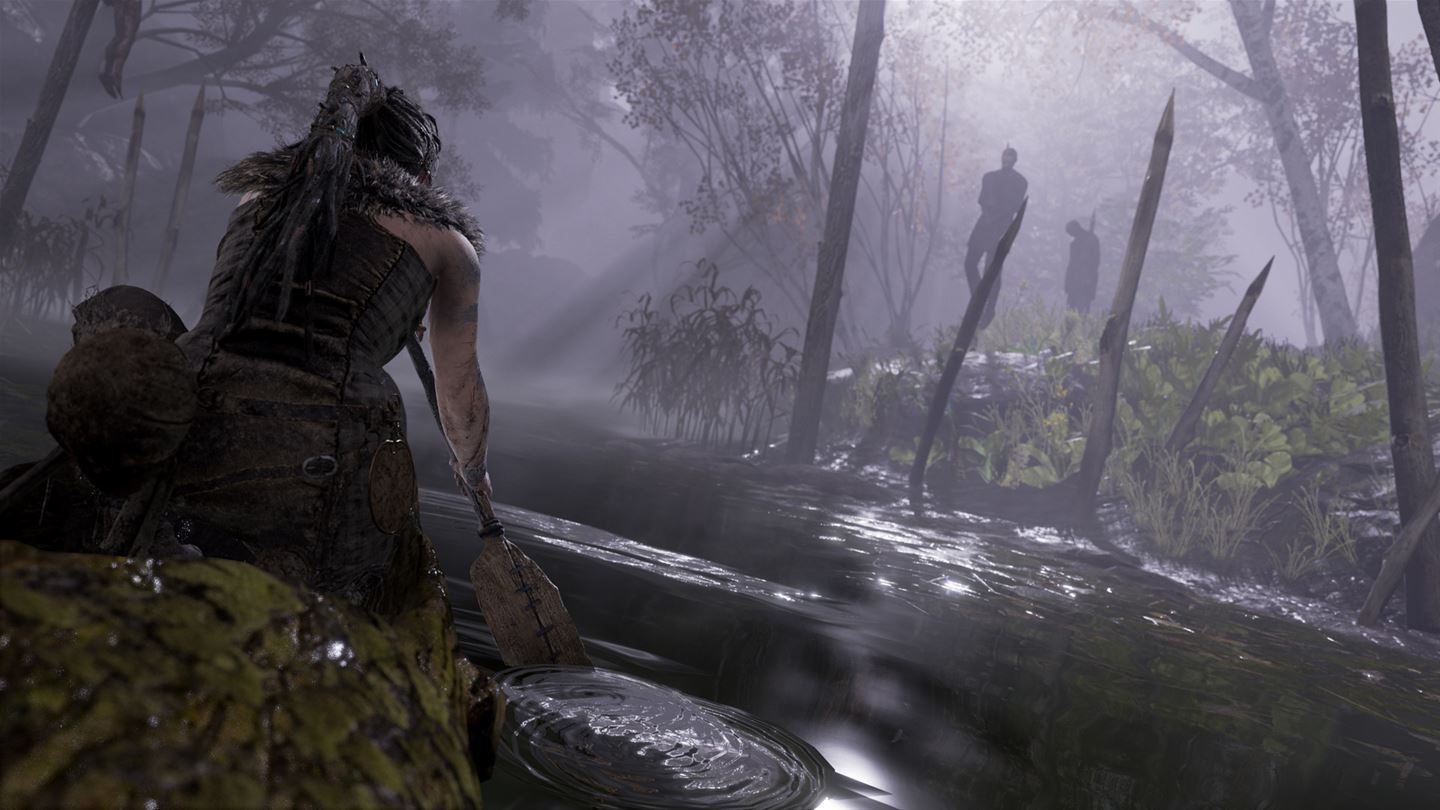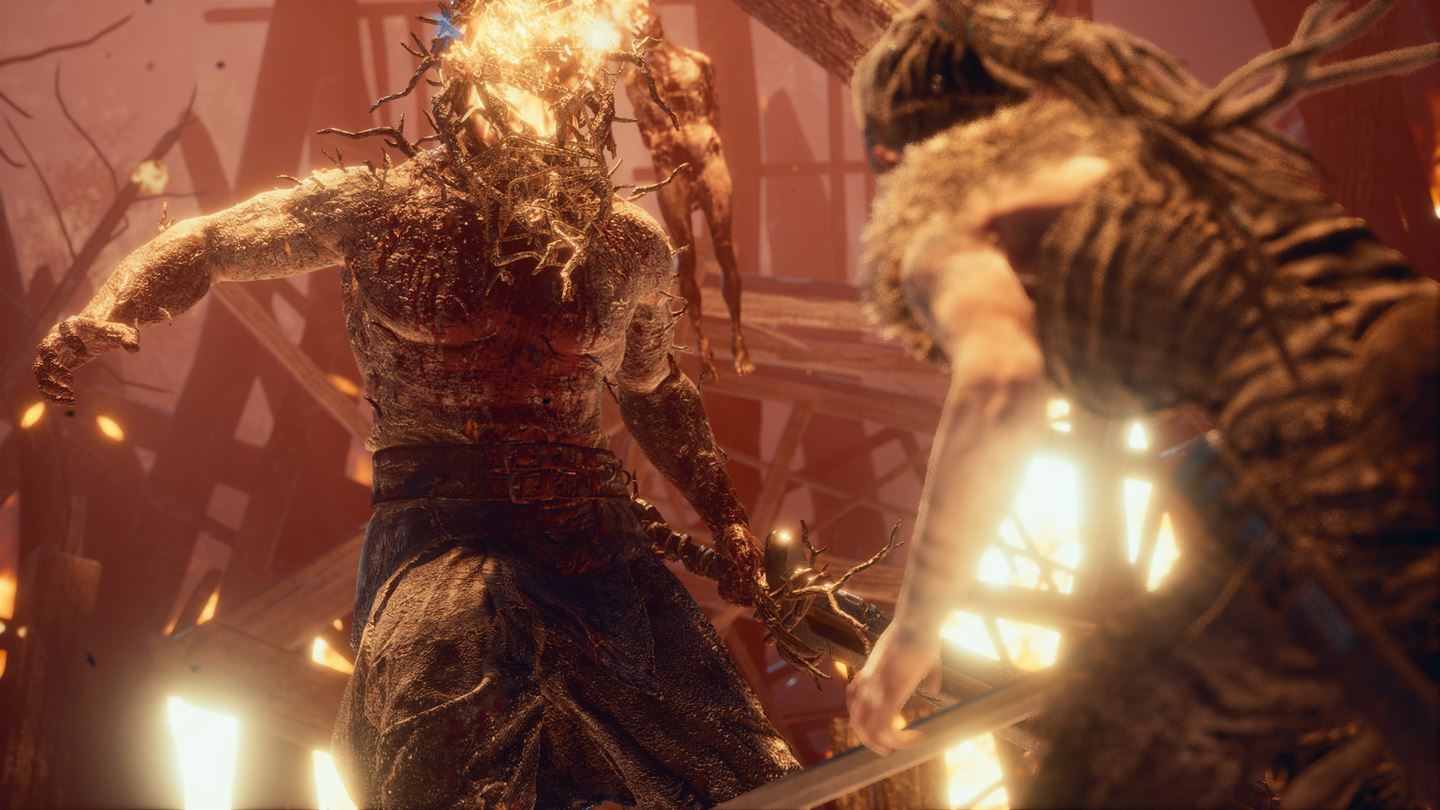Hellblade: Senua's Sacrifice is a third-person action game along the lines of Ryse: Son of Rome. While both titles share a familiar style when it comes to photorealistic visuals and sword-based combat, the similarities end there. Instead of an overblown tale of betrayal and other anachronisms, Hellblade: Senua's Sacrifice focuses on mental illness. The border between actual events and hallucinations is blurred in this fascinating game which explores a haunting vision quest into Viking hell.
Background and story

Hellblade: Senua's Sacrifice is set in a warring era and follows a broken Celtic warrior named Senua as she embarks on a dangerous mission into Helheim. She wants to save the soul of her dead lover who was sacrificed to the goddess Hela by the invading Vikings. While that's the premise behind the adventure, the real battle occurs within her mind as she tries to overcome psychosis and its symptoms.
Ninja Theory treats the subject matter of mental illness with the proper care.
Psychosis is a condition which results in difficulty distinguishing between what is real and what isn't. Symptoms can include false beliefs as well as auditory and visual hallucinations. Other symptoms may include lack of motivation and difficulty carrying out tasks.
Throughout the eight-hour campaign, it's unclear if what Senua experiences is real or part of an elaborate hallucination. This is done on purpose because it allows the warrior to fight her inner demons rather than some external malevolent force. Developer Ninja Theory treats the subject matter of mental illness with the proper care by giving players a sense of the what the main character is going through. This is a unique approach to storytelling and gameplay, one that hasn't been successfully achieved in the past.
There are also runic pillars scattered throughout the levels which give players a better look into the warrior's journey. They provide more information about the game's myths, give an overview of how the world came to be, and reveal who the major gods are. While it isn't necessary to seek them out because the disembodied voices do an excellent job of explaining what happened in Senua's past, they're still a great way to learn more about Viking beliefs.
Gameplay and mechanics

The game is quite linear as you go from one area to the next either solving visual puzzles or taking out various foes. However, the true highlight of the experience has to be the voices which not only provide narration, but also a glimpse into the mind of someone suffering from psychosis. Hellblade: Senua's Sacrifice was created in collaboration with neuroscientists and people who experience mental illness. This is why the game pulls you deep into the protagonist's mind like that.
All the latest news, reviews, and guides for Windows and Xbox diehards.
Gameplay revolves around finding visual patterns to open doors or slashing waves of foes.
Gameplay revolves around finding visual patterns to open doors or slashing waves of foes to open other passageways. The puzzles mostly require players to position Senua in a way which creates the desired shape on the locked door by using their perspective. Unfortunately, it seems like many of the puzzles are repeated through the course of the campaign.
Combat is basic — until the very end — and requires gamers to either block or attack opponents. You can hit someone with a light slash or a heavy strike. There is also the option to evade but blocking attacks is much easier, at least to begin with. Enemies aren't challenging, but that might be preferable because the title features a permanent death mechanic. If you keep on falling in battle, a dark mark keeps on growing on your hand until it consumes you. Combat difficulty can be adjusted at any time, but by default the game automatically tweaks it depending on your skill level.
Performance and visuals

Hellblade: Senua's Sacrifice is a treat to play on Xbox One X. The game features three modes on the console which favor resolution, frame rate, or advanced effects. If you're playing on a 4K display and want the sharpest image at all times, then you should go for the resolution option as it achieves native 4K but dynamically adjusts it to maintain performance. Many gamers will prefer this because of the noticeably crisp image quality.
Enriched visuals offers the best upgrade if you own an Xbox One X.
Setting the game to focus on performance significantly downgrades the visuals and resolution, but the title runs at 60 FPS most of the time. The increase in frame rate reduces the input lag and combat is a treat. Slicing through grotesque enemies feels smooth and blocking their attacks is also much easier due to the added responsiveness.
One of the main reasons why Hellblade: Senua's Sacrifice appeals to many people is the fact that it features immersive visuals. While many gamers will consider the downgrade acceptable to achieve 60 FPS, a blurry presentation is still rather jarring to witness. Those on 1080p displays may not notice, but it's still a significant tradeoff.
Player choice

Enriched visuals offers the best upgrade if you own an Xbox One X. It seems like it keeps the resolution relatively high but increases foliage and other details. The world feels much more alive as a result of this. Hellblade: Senua's Sacrifice might be the best looking game on Xbox One, even surpassing Ryse: Son of Rome after all these years.
The game represents one of the best implementations of Xbox One X support.
The game represents one of the best implementations of Xbox One X support due to the choices it offers. You can make Hellblade: Senua's Sacrifice look the way you want it to. Ninja Theory could've easily offered only a 4K mode but the studio went above and beyond. This is a testament not only to its technical prowess, but also to the team's dedication to providing the most choices to consumers. This is how every Xbox One X game should be if it can't achieve 4K 60 FPS like Forza Motorsport 7, Path of Exile, or Nine Parchments.
Technical issues

Hellblade: Senua's Sacrifice isn't a perfect experience when it comes to its performance through. At times there are noticeable slowdowns and stutters. The issues are so minor that they're hardly problematic, but they stand out in a nearly technically perfect experience nonetheless. There is also some texture pop-in once in a while, but that seems to only occur if you repeatedly change the Xbox One X visual settings without restarting the game.
Hellblade: Senua's Sacrifice for Xbox One review conclusion

Overall, Hellblade: Senua's Sacrifice is a great game which lives up to Ninja Theory's strong history of producing excellent action titles like DmC: Devil May Cry, Enslaved: Odyssey to the West, and Heavenly Sword. Its approach to presenting mental illness in a way many people can understand is also remarkable. The use of stellar voice acting enhances the experience and gives it a "AAA" feel despite the fact that it costs a fraction of that.
Aside from the linearity and slight performance issues, there isn't much to fault in Hellblade: Senua's Sacrifice. It's a unique title which succeeds in its mission of giving gamers a glimpse into how people deal with psychosis and loss. It also delivers a realistic yet uplifting conclusion in the end.
Pros:
- Gorgeous visuals.
- Easy to learn.
- Great setting and story.
- Excellent Xbox One X support.
Cons:
- Slight performance issues.
- Simple visual puzzles.
- Simple combat.
- Linear environments.
Hellblade: Senua's Sacrifice is only available digitally for Xbox One, PC, and PlayStation 4. The game should launch on Xbox One on April 11, starting at $29.99. Those who preorder can acquire it for $26.99 before release.
Keep an eye on WindowsCentral.com/Gaming for all the latest in Xbox and Windows 10 gaming, accessories, news, and reviews!

Asher Madan formerly handled gaming news for Windows Central. Before joining Windows Central in 2017, Asher worked for a number of different gaming outlets. He has a background in medical science and is passionate about all forms of entertainment, cooking, and antiquing.

